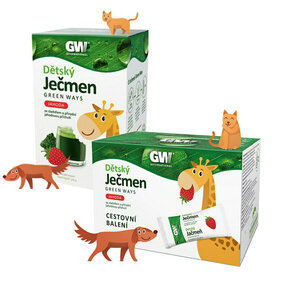DO YOU KNOW WHY LIVE ENZYMES ARE IMPORTANT FOR THE HUMAN ORGANISM?
Enzymes are biocatalysts, so they helps other organisms to perform their activities better and faster. Enzymes accelerate chemical reactions in the body that would otherwise be too slow for us to survive.
DO YOU KNOW THE TASKS THAT ENZYMES CARRY OUT IN OUR BODIES?
One of the tasks of enzymes is to aid in digestion, but far more important tasks are their anti-inflammatory, anti-fibrosis, immunity, cleansing, antiviral, anti-cancer and proteolytic (protein digesting) effects. Because the stores of enzymes in the human body are limited and become depleted with age, they need to be replenished regularly. However, most of us consume heat-treated foods that do not contain enzymes, as they are completely destroyed at a temperature of 40 degrees Celsius. One of the best sources of enzymes is the Green Ways Young Barley juice. In 1979, the Japanese Society for Pharmaceutical Sciences discovered that barley contains more than 20 species of enzymes, and since then, they have discovered a number of other types. Here are a few enzymes that are very important to the body, which are present in Green Ways Barley:
SUPEROXIDE DISMUTASE (SOD) – breaks down highly reactive superoxides, which are formed in the body during metabolic processes and are very toxic, so they can damage the DNA. Low SOD can be one of the causes of: - tumor growth
- arthrosis
- premature aging
- atherosclerosis
- Ahlzheimer's disease
- rheumatoid arthritis
- chronic inflammatory diseases
- lung diseases…
TRANSHYDROGENASE – is involved in the proper functioning of the heart muscles
NITROGEN OXIDOREDUCTASE PEROXIDASE – breaks down hydrogen peroxide into oxygen and water, for its easy excretion from the body OXIDASE – is needed for the processing of fatty acids
Most commercially available enzyme preparations (even those designed for systemic enzyme therapy) are obtained from the blood, organs and tissues of animals. Many experts are now questioning these sources and recommend a pure plant enzyme therapy. When there is a deficiency of these enzymes in the body, the breakdown of fats slows down, which results in not only in a lack of energy, but also in significant weight gain.







